In 2009, Eryn Jobe of Huntington, W.Va., then 21, gave birth to a girl. For postpartum pain her doctor prescribed Percocet, a legal opioid. “It was like somebody had lit a candle,” says Ms. Jobe. She got addicted to pills, and then to a cheaper fix, heroin.
For years, Ms. Jobe got high, paying for her addiction with petty thefts and other hustles. “I hated the person that I was, but with addiction comes a different mindset; it becomes not a choice anymore,” she says. “I lost friendships, I lost my family, I lost my jobs.”
It was not until her boyfriend, a “full-blown addict,” overdosed in the passenger seat of her car as she was driving during the summer of 2017 that she woke up. “There was no compassion,” she says describing her feelings following the incident, which ended with the man being revived with Narcan, an overdose reversal drug. “And when I realized I’m not having normal human emotions, I started to contemplate my whole situation.”
She decided to seek treatment.
How to help people like Ms. Jobe in that pivotal moment of enlightenment and openness is one of the most important health questions in the United States today. An estimated 11.4 million Americans abused prescription pain drugs in 2017, according to government data. Almost one million used heroin, and 75 percent of those people started by abusing prescription drugs.
An estimated 11.4 million Americans abused prescription pain drugs in 2017, according to government data.
Doctors, counselors, politicians, prosecutors and pastors are converging on new approaches that combine medicine, law enforcement, drug counseling and spiritual direction. “At first, I thought drugs were a law enforcement issue,” says Steve Williams, the mayor of Huntington, which has been ravaged by addiction. “But it’s way more complicated; you need to look at everything.”
What makes opioids different is that long after any crime related to the drug has been committed, the people who ingested the opioids ates are still living with their addictions. Opioids, which are derived from, or mimic, opium, a drug made from the poppy plant, block the brain’s perception of pain, an almost irresistible lure once it has been experienced. Yes, there is some choice involved in taking that first pill, but the rest of the addict’s journey is often without capacity for choice or restraint, experts say. That makes it a public health issue, and when people like Ms. Jobe are ready to get better, it is essential that society respond to their moments of clarity.
Therapy Versus Medication
Huntington recently developed “quick response teams” to respond to any report of an overdose. These teams include a police officer, an emergency medical technician and either a recovery coach or a clinician. That kind of holistic approach, which is becoming more common, knits together two approaches that have often been at odds.
On one side is a kind of therapy broadly known as a 12-step program that follows the guiding principles of Alcoholics Anonymous, or AA, a popular self-help group founded in Akron, Ohio, in the 1930s. AA and other sister organizations preach abstinence, surrender to a higher power and the creation of a supportive network of friends and fellows addicts.
On the other side is weaning patients off dangerous substances with a range of milder drugs, like methadone or Suboxone, opioids that are not as strong or addictive. Without these drugs, many doctors say, patients are at risk of overdosing when they relapse, consuming an amount of opioids their bodies are not prepared for. But these drugs can also prolong addiction or be abused and trafficked.
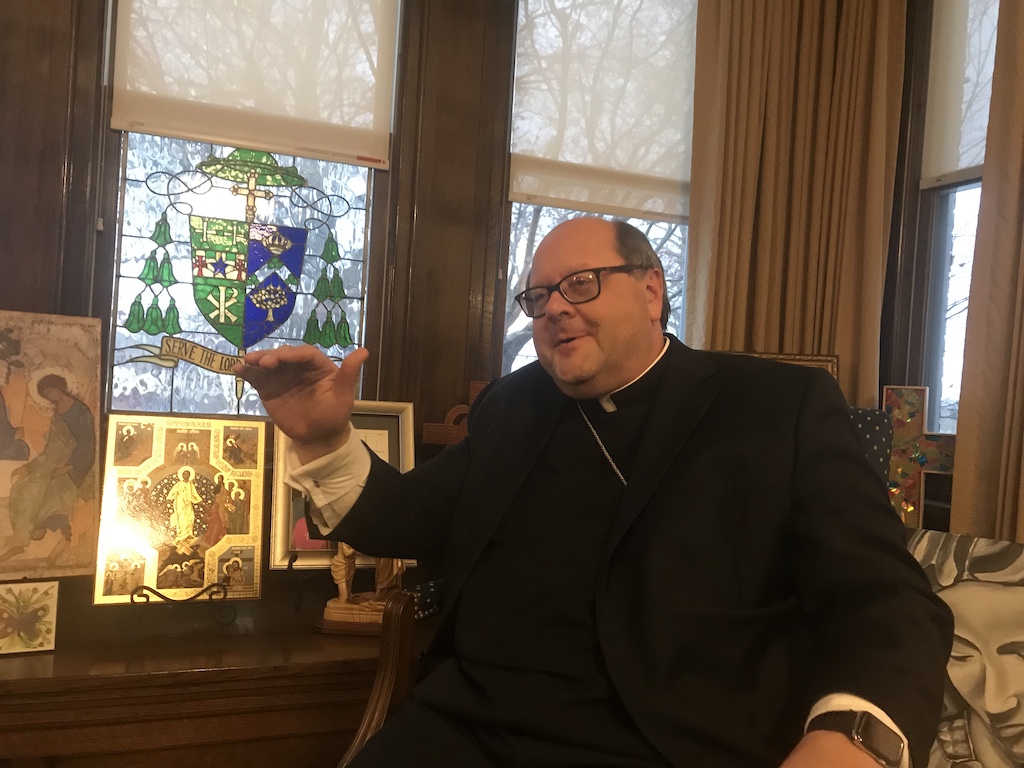
A new consensus, driven by a desperate search for new solutions to a vicious and unexpected public health crisis, is emerging that the best approach to treating people like Ms. Jobe involves combining different approaches from both ends of the drugs-or-abstinence spectrum. We need to stop “pitting one treatment modality against another,” says G. Caleb Alexander, M.D., the co-director of the Johns Hopkins Center for Drug Safety and Effectiveness. The upshot: Clinics are hiring pastors; faith-based groups like Catholic Charities are prescribing pills; and you hear people on both sides of science and religion saying basically the same thing.
The solution to the “current opioid crisis is one that involves the whole person,” says the Most Rev. Edward Malesic, the bishop of the Diocese of Greensburg in western Pennsylvania, a region hit hard by opioids. “The use of opiates changes the chemistry of the brain. It’s a sticky disease. Our brain is wired to want air and water. If you’re addicted, your brain is wired to want opiates; and it’s a strong addiction, so you need both a medical and pastoral response.”
The stakes are high. Developing better treatment could save tens of thousands of lives. According to the Centers for Disease Control, in 2017 there were 70,237 deaths by drug overdose in the United States, at a rate 10 percent higher than the year before. Around 50,000 of those involved opioids.
“Getting Ahead of Your Pain”
The opioid crisis mushroomed in the 1990s, when doctors in the United States started treating pain more aggressively, adding it as a fifth vital sign, along with temperature, pulse, respiration and blood pressure. They even talked about “getting ahead of your pain,” prescribing opioids pre-emptively. Also, in a health care system that often chases profits, it made more sense to quickly prescribe a pill than to work with somebody in pain on a longer treatment plan involving healthier alternatives, like diet or exercise.
Around that time, Purdue Pharma started aggressively marketing Oxycontin, a mass-market opioid painkiller that promised a slow release of opioids, which would make it less addictive. Still, millions got hooked, building a market for the heroin from Mexico that was then flooding the United States, and in this decade, synthetic opioids fentanyl and Carfentanil, which are much stronger and more dangerous.
Purdue did not return a request for comment. It is in the process of paying out hundreds of millions of dollars in compensation, recently settling with the State of Oklahoma for $270 million. In addition, museums are starting to reject donations from the company’s owners, the Sackler family, who are among the world’s leading philanthropists.
As those battles get settled, policymakers say the focus now should be on treatment.
The natural alliance of public officials has often been with the medical community. Medical treatment involving drugs “is especially valuable early in a recovery,” says Dr. Alexander, the Johns Hopkins doctor. He says treatment drugs have been unfairly stigmatized as a fraudulent form of getting clean. “We don’t talk about ‘medication assisted treatment’ for asthma and diabetes,” he points out. “There are medications for addiction like there are medications for other chronic diseases, and anyone who wants treatment with medicine should have access to them on demand.”
“My definition of recovery is abstinence, plus change,” says the recovery coach Justin Patton.
The fiercest opponents of that point of view are recovery coaches in the 12-step community, many of whom are recovered addicts themselves.
People who are taking Suboxone and methadone “are running around telling people they’re in recovery, but my definition of recovery is abstinence, plus change,” says the recovery coach Justin Patton, 37, who has been clean for over three years, thanks, he says, to a 12-step program. “The meetings are a reminder you’re not alone,” he says. “I can go to a meeting and see one person doing better than me, and 10 people who aren’t.”
Mr. Patton admits that heroin haunts him. After I ask a couple of questions about the drug, he replies, “You know, if we talk about heroin, that’s going to give me a thought, and the thought could turn into a craving, and that craving could become an obsession, and that could make me want to use again.” Putting words on those feelings helps control impulses, he says. Spooked, I change the subject.
The frequency and pain of relapse is a tough and demoralizing fact for families of people with addictions and the people who treat them. They say one needs to learn to treasure any day without drugs, even if a relapse follows.
The frequency and pain of relapse is a tough and demoralizing fact for families of people with addictions and the people who treat them.
In November 2017, Terry Allebaugh, an activist for the homeless in North Carolina, took his 37-year-old son Eli to a meeting at the White House about addiction, which was chaired by Chris Christie, the former governor of New Jersey. It was a hard decision. For over a decade, Mr. Allebaugh had fought to help his son get off heroin. “For a teenager who was smart, artistic, engaging and athletic, I could not have imagined such a path for my son,” Mr. Allebaugh told Mr. Christie. “It’s a path that’s included arrest and incarceration, multiple stays in numerous detoxification programs.”
One problem, he said, was a lack of connection among social services. “The elements of response to his situation never seemed to be connected in a comprehensive way that would lead to an integrated life of employment and independent living,” he said. People with addictions get lost in the system. Once, Eli had to wait 15 hours in an emergency room.
Mr. Allebaugh then revealed that it was Eli’s birthday, and that he was in the room. “It’s truly a celebration for us not only to have your testimony but to have your son here,” said Mr. Christie according to a recording of the event. “I’m hoping that today provides him encouragement to keep staying the course,” Mr. Allebaugh responded.
In February of 2018, Eli died of an overdose of fentanyl and heroin.
The trip to Washington in 2017 “was a good day for Eli,” Mr. Allebaugh says. “I think you have to maintain that perspective, that every day is precious.”
Mr. Allebaugh is one of many parents who wish their child had been given more options. “He was active in 12-step programs, and I think medical treatments could have helped,” he says.
“There’s so much stigma about medical treatment within the 12-step community,” says Carmon Capozzi, whose son overdosed in 2012. “My son went to rehab a few times, and was never prescribed” treatment drugs. “I think that could have helped him,” he says.
A Collective Addiction
One reason for the stigma is politics. In the 1980s and 1990s, religious and conservative political leaders coalesced around their opposition to abortion, predisposing churches to preach in support of personal responsibility for one’s actions, says Jason King, a professor of theology at St. Vincent’s College in Latrobe, Pa. This campaign, combined with Ronald Reagan’s War on Drugs, reinforced the notion of addiction as a weakness or sin.
The scorn that many have for people who are addicted to opioids reflects “our culture’s obsession with other people’s sin,” says Father Richard Rohr.
That way of thinking is misplaced, says the Franciscan writer Richard Rohr. “Healing should be our primary mission, not sin management,” he says in an interview. “Most of what Jesus did for three years was heal.” He adds: “Our real addiction is collective, to comfort and consumerism. Our society has lost its tolerance for pain, and that enables addiction.”
The scorn that many have for people who are addicted to opioids reflects “our culture’s obsession with other people’s sin,” says Father Rohr. “Jesus’ message was to not throw the stone.”
The thinking of churches and their spiritual allies is evolving, with the growing realization that previous efforts at battling addiction only in a spiritual way—like 12-steps programs—are poorly designed to cope with monsters like heroin and fentanyl.
When Nina Corona’s teenage daughter became addicted to heroin at 17, Ms. Corona had just quit a career managing a food company to study theology. She is currently finishing a doctorate at Fordham University. After learning of her daughter’s addiction, she started a ministry called We Thirst, which runs workshops to educate people about addiction. Out of that grew a nonprofit called Afire (Active Faith Implementing Relief in the Epidemic) that helps parishes fight addiction with counseling, education and other actions. “There is a spiritual component,” says Ms. Corona. “But this is more than about mastery of the self. Addiction to opiates is very powerful, and you need to understand the biology, physiology and sociology. That’s why 12-steps may not always be enough anymore.”
Pastoral workers need to understand that addiction is a lifelong condition.
One big shift, she says, is that pastoral workers need to understand that addiction is a lifelong condition, and that some people need to take methadone and other proxy drugs for years before getting clean.
Another new group, Medication Assisted Recovery Anonymous, has combined the 12-step program with an acknowledgment that medication is necessary. Members can still participate even if they are taking recovery drugs. They are still considered “clean.”
More and more of the programs run by Catholic Charities in Baltimore include “substance use counselling, including medical treatment,” says Rowena Daly, a spokeswoman. The city suffered 607 opioid-related deaths in the first nine months of 2018, up from 354 over the same period in 2015; and the problem has become so widespread that Catholic Charities has made an extra effort to connect services better across departments, says Ms. Daly. “For example, if a parent in Head Start has an addiction issue, we can offer them treatment services and therapy.”
“We Can Come Back From This”
There are few places where the question of treatment is more urgent than Huntington, a proud college town of 50,000—home to Marshall University—at the intersection of the Ohio, Kentucky and West Virginia state borders. In 1970, a plane carrying the university football team crashed, killing all 75 people onboard. The memory of that team is invoked as inspiration for overcoming the opioid crisis. “We came back from that, and we can come back from this,” says Mr. Williams, the mayor, who played football at Marshall and keeps a picture of the team that died behind his desk. “We want to be known as the epicenter of the solution to the opioid crisis.”
Nonfatal overdoses in the county were down over 40 percent in 2018, and the mayor credits a new initiative called the Provider Response Organization for Addiction Care and Treatment, or Proact. Housed in an old CVS pharmacy building and launched by a coalition of hospitals and smaller medical providers, the clinic, which has a capacity of 700, offers a range of services covering abstinence and medication-based treatment, including drugs, individual therapy, career placement and monitoring, and even spiritual counseling—all in one place.
Doctors and analysts say the approach is innovative and a harbinger of new approaches being developed elsewhere as well. Recent visitors to the program included top C.D.C. officials and the British ambassador.
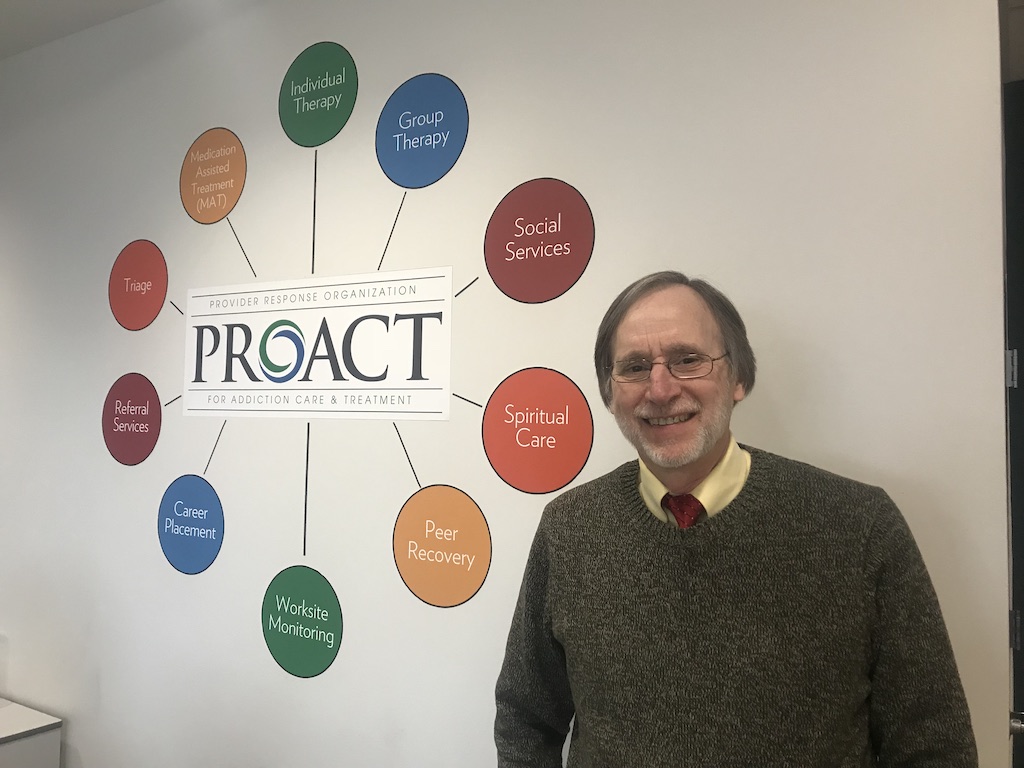
After patients come in, they are assessed by a drug treatment counselor and prescribed a course of treatment. “There’s not one solution that fits everybody,” says Dr. Stephen Petrany, a board member who is the public face of Proact and chair of the Department of Family and Community Health at Marshall’s School of Medicine.
A tall, wiry, 64-year-old Brooklynite who moved to Huntington in 1989 to care for underserved people in Appalachia, Dr. Petrany says the medical community regrets its embrace of opioids in the 1990s. “We all thought it was safer than it actually was,” he says. “But that’s over now, and it’s important to look to the future.”
Dr. Petrany is a trained family physician, which he says, “taught me how important personal relationships are when you’re trying to heal from anything.” It also taught him that one size does not fit all. Also, he says, he learned that the human body is mysterious.
Working with people with addiction is a job full of heartbreak. Dr. Petrany describes the overdose of a 21-year-old woman he had known when she was a child. “The family called me and said ‘fix this,’” he said. “Now she’s at home, taking meds, struggling, but that’s a victory,” he says. “It’s hard for me to judge negatively somebody that I’ve taken care of since she was a kid.”
There are changes in the brain “that happen that you can’t wish or pray away,” says Dr. Petrany. “I’m a serious Catholic, but there are issues where you don’t just appeal to a higher power.”
Another point on which medical and spiritual leaders agree is that this country needs to rethink its attitude toward pain. “There’s this idea that medicine should be able to relieve any suffering you have, and that’s wrong,” says Dr. Petrany.
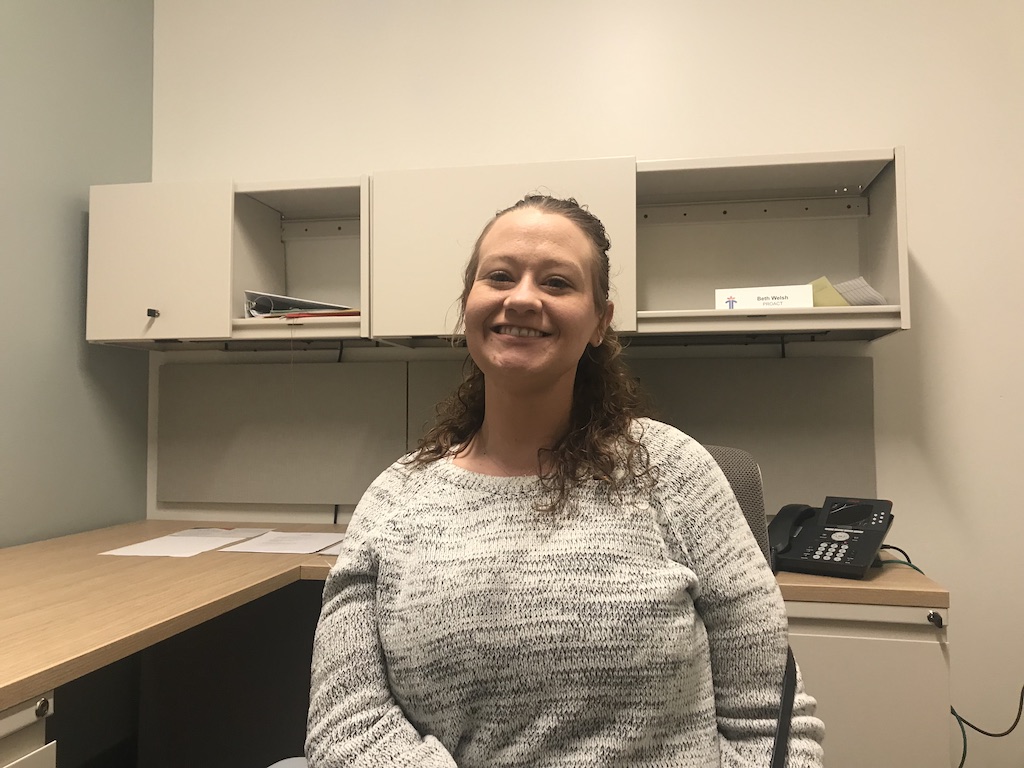
At Proact, staffers are trained to tailor their treatment. “If it’s somebody who’s just dabbled in opiates and they have a good support system, then abstinence is probably best,” says Michael Haney, the director of the center. “If it’s somebody who’s really hooked, then they’re probably going to need medication.”
After an assessment by a counselor, the Rev. Noha Khoury, a Presbyterian pastor, often gives them a “spiritual assessment.” There is no proselytizing. “We try to determine each person’s specific spiritual needs, what gives their life meaning,” says Rev. Khoury. “It’s about helping people find out their authentic desires, what makes them happy.” The idea is to reorient people’s hearts toward something healthy they can love instead of drugs, and that can help them rebuild community. That is often through a church, but it can also be through other shared activities, like crocheting or basketball.
It was on a recent visit to Proact that I met Ms. Jobe. It was her first day there. After deciding to try to get clean, she had problems finding a treatment program.This is not uncommon. People who overdose and end up in emergency rooms often do not know where to seek treatment. But many hospitals do not see it as their job to treat people after they come back from overdosing.
Through a friend, she found a local hospital that is participating in Proact. Her doctor there has put her on one strip of Suboxone, which she takes sublingually every day. “It’s completely changed my life,” she says. She has a good job and custody of her daughter.
The emphasis on human connection is healing, too. “I adore my group therapy family,” she says. “We know each other, we support each other.” She talks to her counselor every two weeks.
Her dad is a minister, she grew up in a church, and even though she is on medication, she also credits faith for recovery. “I found God through addiction, as strange as that sounds,” she says. “You have to realize there’s a higher power. After I accepted that, everything fell into place.”
She describes the treatment drugs she takes as medicine. “People think you’re trading one addiction for another,” she says. “but if that’s what it takes to not lose your kids and not lose your family, then it’s worth it.”
Correction, May 22: The director of the Provider Response Organization for Addiction Care and Treatment is Michael Haney, not Michael Henry.

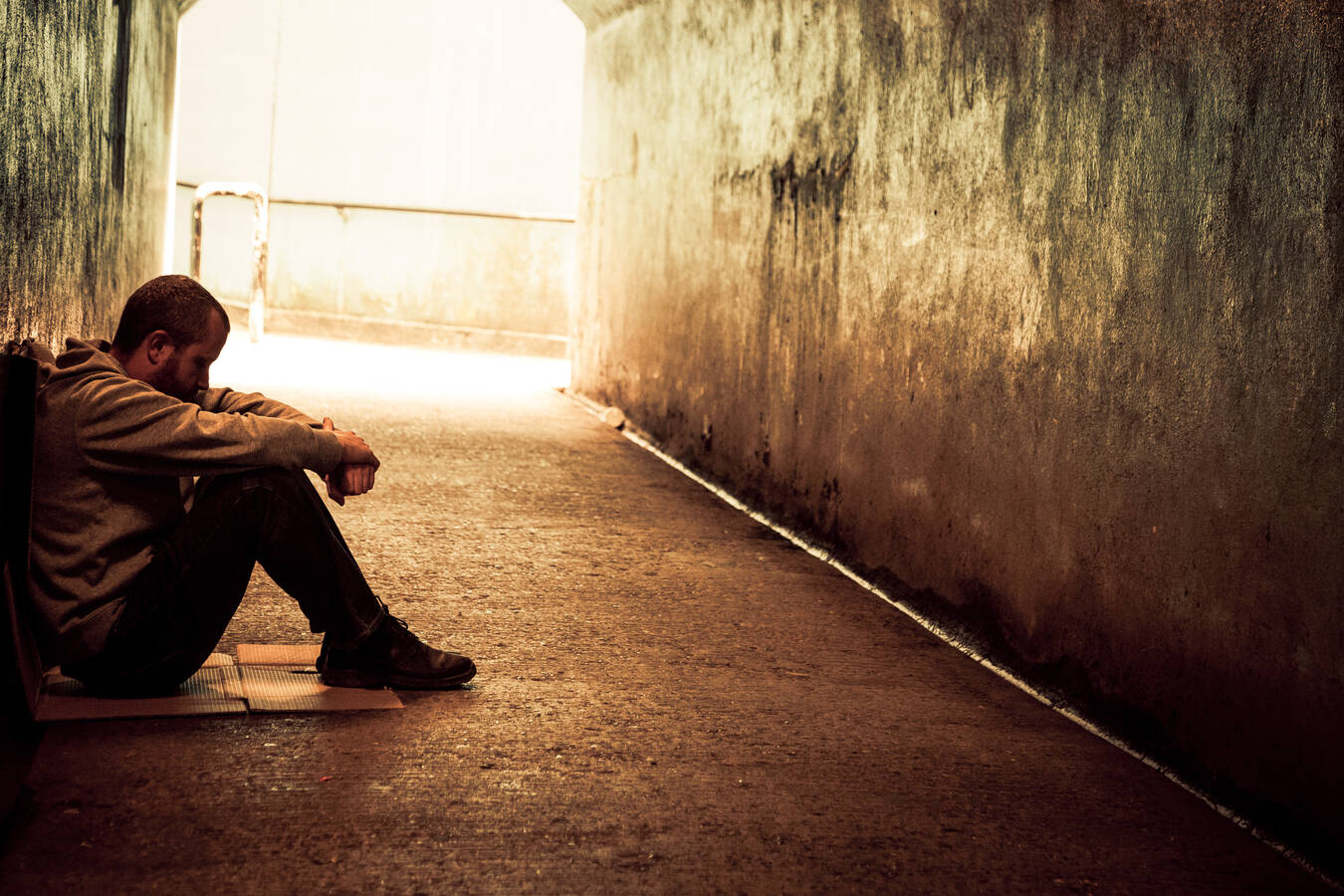




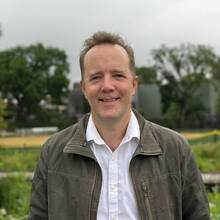





Catholic Healthcare Association members need to expand to fill the need to treat alcoholics, addicts and the mentally ill, whether self, civil or criminal commitments. It needs to be harder to leave, easy to return and independent of the bishops (until elected from below rather than appointed from above with non-profit rather than medieval governance).
This is an excellent article about an ongoing tragedy of epic proportions. May G-D bless those trying to heal it.
(That way of thinking is misplaced, says the Franciscan writer Richard Rohr. “Healing should be our primary mission, not sin management,” he says in an interview. “Most of what Jesus did for three years was heal.”)
It is a terrible thing to come to terms with one’s own prejudices. Mine has always been the drug addicted. I grew up in a neighborhood overwhelmed with drugs.
The drug addicted are a group about which I find it very hard to feel compassion. Besides their own lives, they destroy the lives of family members. They lie, cheat, rob, dissemble. They bring crime and destruction to buildings and neighborhoods. They abandon all moral compass and seek solely their own satisfactions.
I write this because I understand in my mind and heart that drug addiction, like so many others, is not a moral issue but a health issue. I am pleased that some Catholic thinkers and parishes are becoming open to regarding the issue as a health issue deserving of compassionate and multi-faceted approaches to resolution. But in my gut my prejudice remains and it is very hard to reject. That is because we have too many priests and parishes which categorize every human misbehavior as sin with little regard for the human condition. When all you hear all the time is sin, it makes Christian compassion and alternative solutions less an option. Worth thinking about on a whole lot of issues that we confront.
Addiction IS a moral issue, always was and always will be.
The core of the 12 step programme is so successful because it does not encourage or permit lying, blaming other people or insisting that it is impossible to control.
The first choice for a large number of addicts is to take the first joint, the first pill, the first drink despite the warnings of older and wiser people. A large percentage of us DO get away with it, do not become addicted and we well know that there is an addictive personality in many of the vulnerable ones. Not all.
The use of opiates for pain control has an extra dimension, the first doses are given for severe, strong pain by health care professionals. Predicting who will get hooked is very difficult.
Many AA and other 12 step programs are not as opposed to medication as they were in the past. Some of the best things about 12 step groups is that they are widely available and free except for voluntary contributions. If one group doesn’t work for you try another one. I loved what Richard Rohr said. I go to a church that is not judgmental about addiction but I know not all are like that.